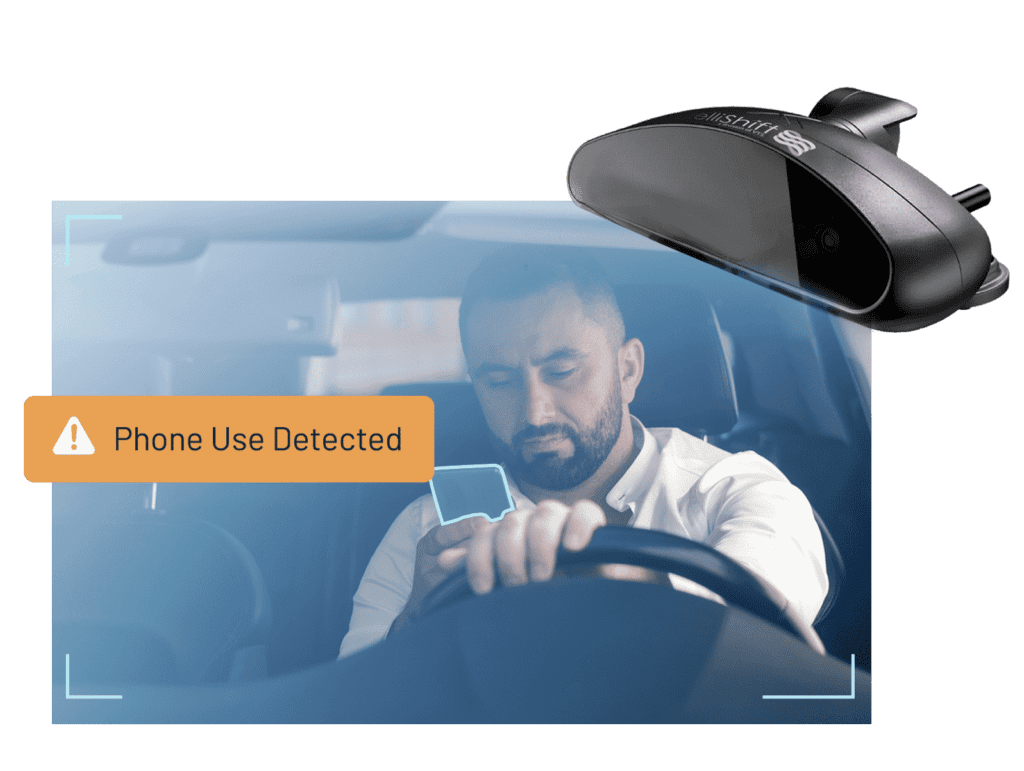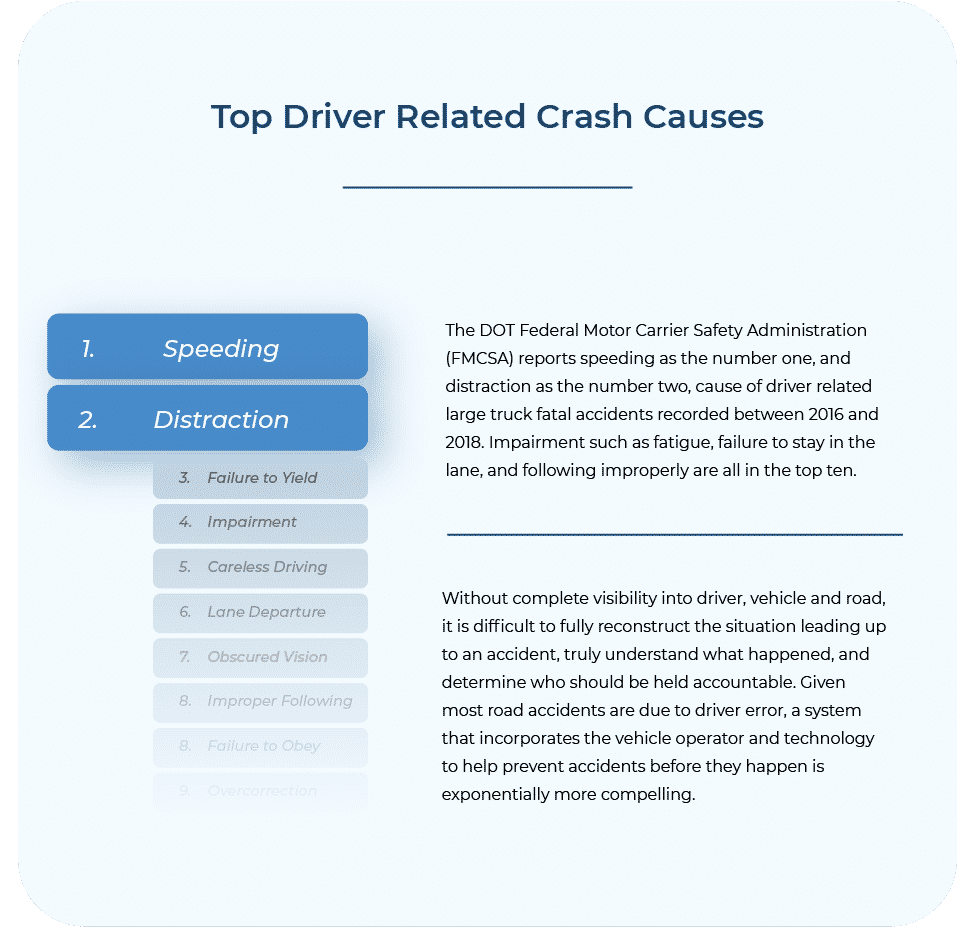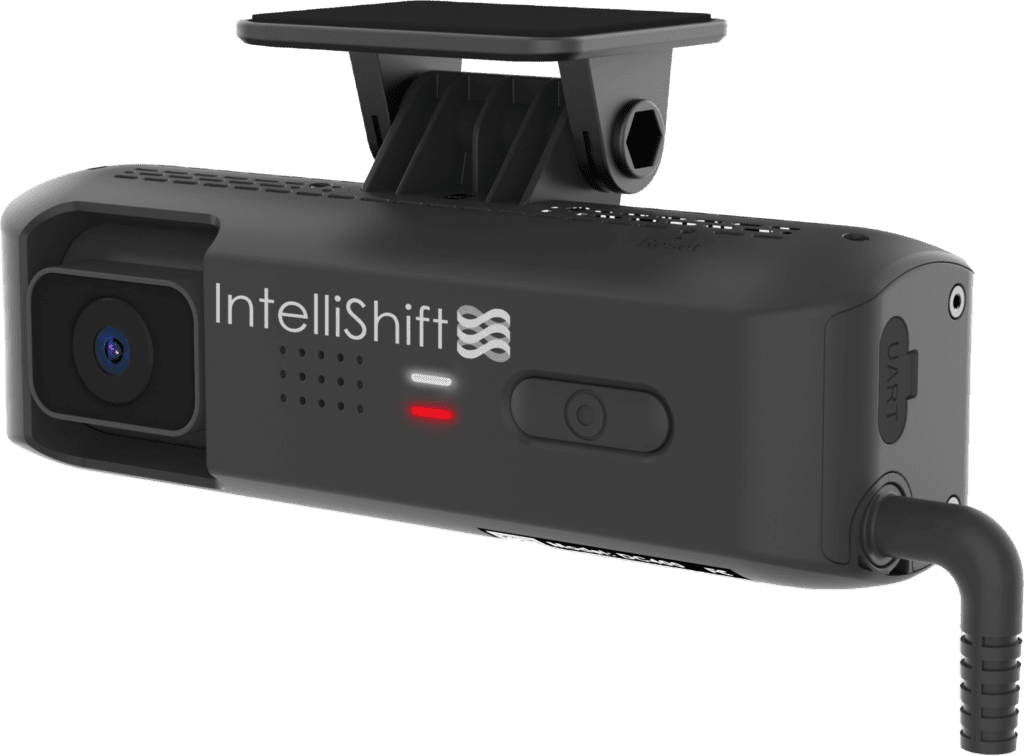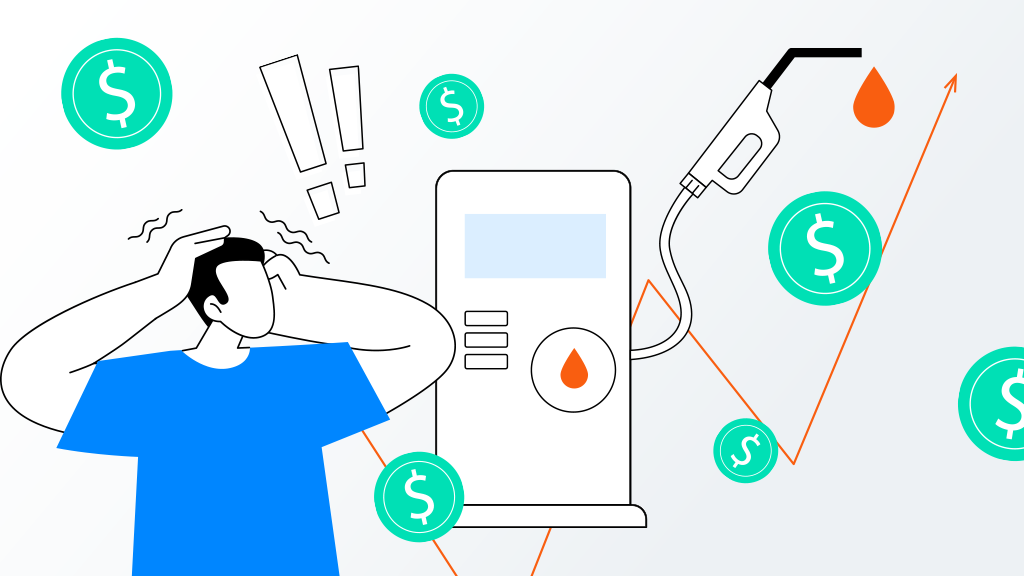From driver safety to evidence for insurance claims, dash cams can provide peace of mind. And they aren’t just for individuals and law enforcement. Fleet dash cams are vital assets to businesses with commercial vehicles and assets. But dash cams built for fleets and those built for the average consumer’s needs are not created equal.

What are fleet dash cams?
Commercial fleet dash cams are in-cab cameras that use the most advanced technology on the market to address complex commercial safety needs. They are designed to detect and capture footage of risky driving events or behaviors, like swerving or cell phone use, and can also deliver audio alerts to help drivers self-correct potentially dangerous behavior. And you can set the camera system to live stream or record video continuously. These powerful features help your drivers avoid potential collisions and provide drivers with critical information that they can use to improve their driving performance.
But why do you need fleet dash cams, and how do you select the best one? Here are some key elements to consider.
Why do your trucks need in-cab video safety?
Research shows that in almost 80% of accidents between trucks and passenger vehicles, passenger vehicles are at fault. Using truck dash cams, you can capture real-time footage as evidence and exonerate innocent drivers. With motion detection, you can even record hit-and-run drivers and vandals while the vehicle is parked. Video evidence also helps streamline the claims process and lets insurance companies know that you take fleet safety seriously. Soon, you may also be able to enjoy discounted insurance premiums. Foreign insurers are partnering with dash cam manufacturers to offer drivers and businesses discounts on their premiums for installing dash cams for a fleet. While negotiations are still underway, a Senate bill in committee would permit New York insurance companies to offer drivers with dash cams a 5% premium reduction.

A fleet dash cam also helps prevent unsafe driving. With an Advanced Driver Assistance System (ADAS) in place, the dash cam will alert to events like speeding, tailgating and lane drifting. Also, the Driver Monitoring System (DMS) in the cabin-facing camera will detect drowsy or distracted driving. Using an analytics dashboard, truck dash cams can also enhance driver training programs and reward safe driving. With features like driver scorecards and video trip review, you can run rewards programs and recognize drivers who adhere to safety measures.
Read: Everything you need to know about fleet safety
Why choose fleet over consumer dash cams?

Fleet dash cams have significant advantages over consumer products. One of the main differences is that the more advanced cameras offer robust AI-powered features. For example, AI dash cams can live stream and send real-time alerts when dangerous behavior like cell phone use or driver fatigue occurs. They also connect to a telematics device that can detect hazardous G-force events like speeding and harsh braking. The dash cam can then auto-upload video footage to the cloud. That way, your data is secure, and you can easily review safety-related events to train drivers effectively. Ultimately, fleet dash cams are designed to remove the manual work from protecting your drivers and vehicles. With AI dash cams, fleet and safety managers don’t have to sift through hours upon hours of footage to find incidents, making it easier to fight false claims and take corrective action.
What are the different types of fleet dash cams?
There are many choices when it comes to dash cams. Here are some of the most common options:
Front-facing dash cams
Designed to capture collisions, front-facing cameras are mounted on the windshield and face forward. These truck dash cams do not record the interior, so they are ideal for fleets concerned with privacy.
Dual-facing dash cams
Dual cameras are also mounted on the windshield. In addition to a forward-facing lens, these dash cams have another lens capturing the cabin interior. This option is ideal for fleets looking to invest in a driver training program and exonerate drivers from false claims since you can use the footage to show the driver was operating safely.

Exterior cameras
You can install exterior cameras outside the truck to capture a 360-degree view of the road. These cameras are helpful when drivers encounter blind spots and need to change lanes. Rear dash cams also capture other vehicles or objects on the road that might be difficult to see in the rearview mirror.
Interior cameras
Interior cameras can be installed in various locations to keep passengers and cargo safe. In addition, these cameras can be useful to gain real-time data, including how full your trailers are.
Multi-system cameras
Multi-system cameras can expand to support front and rear cameras and an in-cab monitor. This option provides the driver with added coverage to capture all angles and eliminate blind spots. They are the best option for those who operate larger vehicles like semi-trucks or tractor-trailers.
What to look for when choosing a dash cam
High-quality imagery
Having a sharp image is necessary in the event of an accident. Be sure to choose a wide-angle lens with at least 1080p HD video and a high dynamic resolution (HDR).
Ease of installation
When deploying large numbers of truck dash cams, you want cameras that are easy to set up. Choose technology that comes from a company with a top-notch customer service team to assist with the entire installation process. With a large, complex fleet operation, it is unlikely that a self-install supplier will get you up and running quickly and without issues.
In-cab coaching
An in-cab audio feature means the fleet dash cam can warn drivers of unsafe behavior like speeding and harsh braking. The moment the system detects hazardous activity, it will alert your driver before a collision occurs.
Driver monitoring
Another critical feature to look for is an ADAS that includes automatic emergency braking, lane departure warnings, blind-spot detection and other types of crash-prevention technologies. And if your dash cam is equipped with a DMS, it can analyze driver behavior in real-time. This feature is helpful when training drivers and helping to prevent collisions.
Data analysis tools
Choose a dash cam system that helps you analyze your data with tools that track trends and suggest safety improvements. By measuring everything happening with your vehicles, you can increase fleet safety, compliance, fuel efficiency, productivity and profits.

Dash cam technology is transforming the fleet industry by ensuring vehicle and driver security and safety, saving money and improving driver training programs. By taking the time to choose the right dash cam, you will be able to exonerate drivers from false claims, reduce collisions and ultimately save lives.
Learn how to roll out AI Dash Cams to your drivers and get them on board with in-cab safety



![Episode 50 Thumbnail Erin celebrates building the fleet community with 50 episodes and 11K followers on LinkedIn [Podcast]](https://intellishift.com/wp-content/uploads/2021/11/AI-Video-11-19.png)



